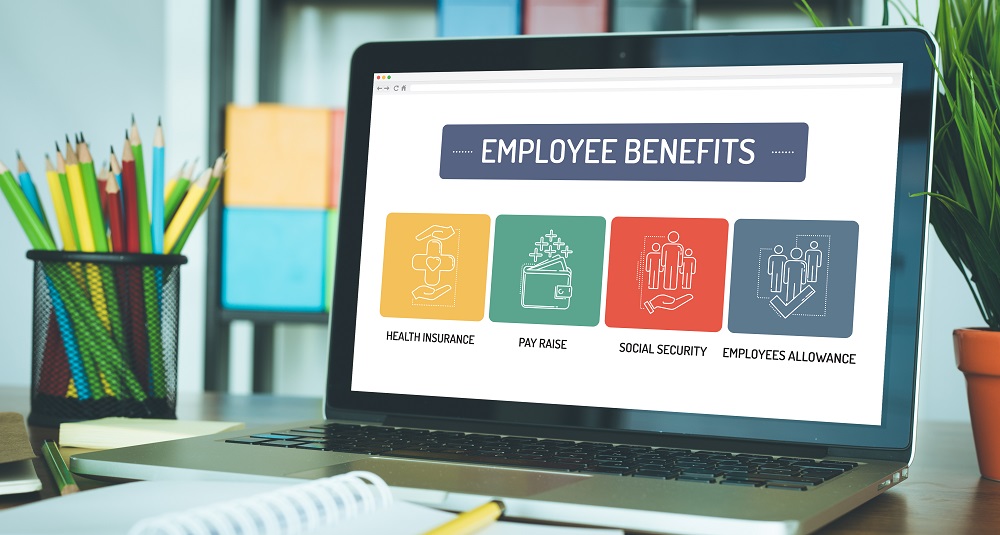
DEPOSIT PHOTOS
Now more than ever, people are basing their employment decisions on benefits, with many placing a higher value on affordable health care and well-being perks than they do on salary. So, to attract and retain top talent, businesses need to offer competitive, appealing benefit packages. Even more important: to support team members’ physical and emotional health and wellness, satisfaction and engagement, we need to offer benefits that are meaningful to our people.
At the same time, we have to balance the cost of each benefit with its impact on team members and the business. There’s no point in subsidizing benefits people don’t use, want, need or value. Or in holding back on programs that would help our people live their best lives. Rather, we should invest in benefits that reflect our core values, promote well-being and belonging, and build a culture where people care and feel cared for.
But benefits are evolving, and what was appropriate and appreciated in the past may not cut it today. In general, employees are more committed to their physical and emotional health and more focused on flexibility and work-life balance than before. So, employers need to rethink their programs to meet today’s needs and expectations.
After all, our benefit packages signal how much we care for our team members. And a recent Mercer survey shows that people who believe their company cares about their well-being are more likely to be engaged and less likely to leave.
Discover what’s important
To start, consider your team members’ different demographics, life stages and styles. Survey them to find out what’s essential and what’s missing and solicit input as you design your program. If you find some people aren’t feeling supported, use that information to guide how you might evolve your offerings.
If you’re lucky, there’ll be consensus on what your team members want. But chances are, you may find a range of responses. For example, team members with young children may ask for childcare support or flexible hours. Others may be more interested in help with tuition or student loans. And most will probably place a high priority on affordable and comprehensive medical plans. Since we can’t provide everything for everyone, we can address the gaps with voluntary benefits, health savings accounts and flexible spending accounts.
On the other hand, you may offer benefits that people don’t take advantage of, but should. We’ve noticed some of our younger employees don’t participate in our 401(k) plan even with its percentage-matching contribution. While we can’t and wouldn’t force them to contribute, we do think it’s our responsibility to provide and encourage, even nudge, team members to participate in a retirement plan.
Follow best practices
Here are some best practices to keep in mind when reworking your benefits program:
Re-evaluate every few years. Designing and launching a benefits program is a significant undertaking, and once implemented, it’s not easy to add and subtract offerings. So, while we need to keep surveying our team members and adapting our programs, it would be impractical and confusing to change offerings every year.
Be equitable and inclusive. A successful benefits program is one that benefits everyone. If people think they’re not getting as much value as their colleagues, it can create division. This can happen when people on the front line think managers have better options than they do. Or when team members who don’t have dependents think the program is skewed to favor those with families. To avoid this, actively solicit input as you design your offerings and act on what you learn.
Communicate and educate. Don’t be surprised if in your survey responses, people ask for benefits you already offer. Employees often aren’t aware of everything that’s available or don’t understand their choices. So, promote and explain your programs throughout the year, not just when onboarding and at open enrollment time. Maybe pick one or two to highlight in detail at every company and department meeting, in routine emails and newsletters, or even ask supervisors to go over them during one-on-ones. And be sure to include them in your job descriptions. Appcast research shows that doing so increases application rates by 22%!
Know what’s trending
Employers are considering a wide range of new programs to address evolving wants and needs, and learning about the trends can help you understand how you might better serve your team members.
Unofficial benefits and perks
In addition to your official benefit plans, unexpected perks are a great way to show how much you care. For example, encourage your leaders to write notes and distribute spot awards as thanks for a job well done, or celebrate employment anniversaries.
There are all kinds of ways to care for your people and their well-being. The key is to understand their different life stages and situations so you can help them live their healthiest lives wherever they are right now.
Lauren Dixon is board chair of Dixon, Schwabl + Co., a marketing communications firm.
 New England Biz Law Update
New England Biz Law Update
